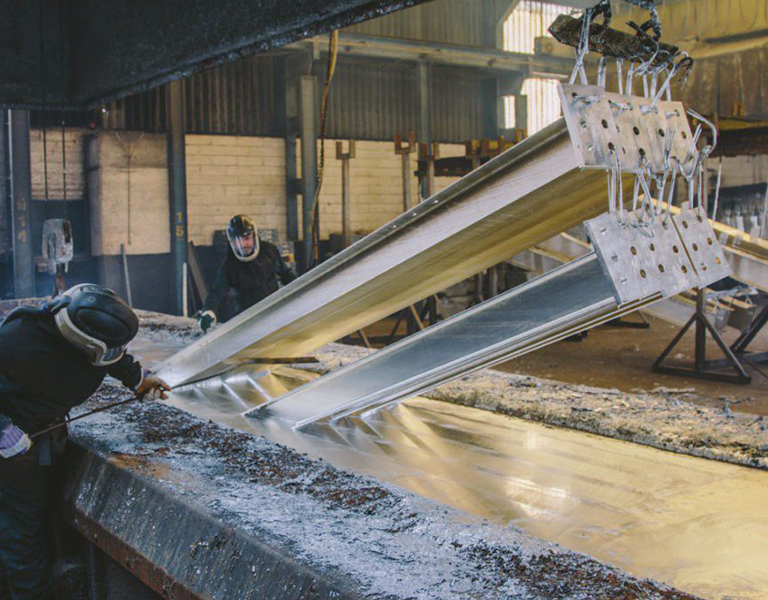
Corrosion is one of the biggest challenges facing steel structures, leading to material degradation and reduced lifespan. To counteract this, various protection techniques are used, with hot-dip galvanization and protective coatings being the most common. In this article, we will explore the advantages and disadvantages of each method and when to use them.
TO watch video click here
1. Hot-Dip Galvanization
What is Galvanization? Galvanization involves coating steel with a layer of zinc by immersing it in molten zinc. This process provides effective corrosion protection, even in harsh environments.
Advantages of Galvanization:
✅ Long-Lasting Protection: The zinc layer can last for decades, up to 50 years in some conditions.
✅ High Resistance to Environmental Factors: Effective in humid, coastal, and industrial areas with chemical exposure.
✅ Comprehensive Coverage: Zinc covers all parts of the steel, including hard-to-reach areas.
✅ Low Maintenance Costs: Once applied, galvanization requires minimal upkeep.
Disadvantages of Galvanization:
❌ Higher Initial Cost: The galvanization process is more expensive compared to coatings.
❌ Possible Aesthetic Changes Over Time: The surface color may change over time, affecting visual appeal.
2. Protective Coatings
What are Protective Coatings? This method uses layers of protective paint, such as epoxy or polyurethane coatings, to create a barrier preventing steel from reacting with external elements.
Advantages of Protective Coatings:
✅ Lower Initial Cost: Generally cheaper than galvanization at the time of application.
✅ Customizable Colors and Finishes: Available in a variety of colors and finishes to match architectural designs.
✅ Easy On-Site Application: Can be applied directly at the project location without special equipment.
Disadvantages of Protective Coatings:
❌ Requires Regular Maintenance: Over time, the coating may crack or wear off, necessitating reapplication.
❌ Less Durable in Harsh Environments: Not as effective as galvanization in high-humidity or chemical exposure areas.
Which Method is Better?
🔹 Galvanization is the best choice for long-term protection, especially in coastal or industrial areas with high corrosion risks.
🔹 Protective coatings offer a cost-effective and flexible solution but require frequent maintenance to stay effective.
The ideal choice depends on the environment, cost, and usage conditions. If you seek a durable, low-maintenance solution, galvanization is the optimal choice. However, if you need a customizable and easy-to-apply solution, protective coatings may be the better fit.
Hasanoglu – Expertise in Steel Structures & Protection
At Hasanoglu, we specialize in manufacturing and supplying high-quality steel structures while offering advanced corrosion protection solutions for durability and optimal performance. We provide both hot-dip galvanization and protective coatings tailored to your project’s needs, ensuring the highest standards of protection and sustainability.
Whether you require long-term galvanization protection or a flexible, customizable coating solution, our expert team is ready to provide consultation and the best solutions for your project.
📩 Contact us today to learn more about our effective steel protection solutions!
What do you think? Which method do you prefer?